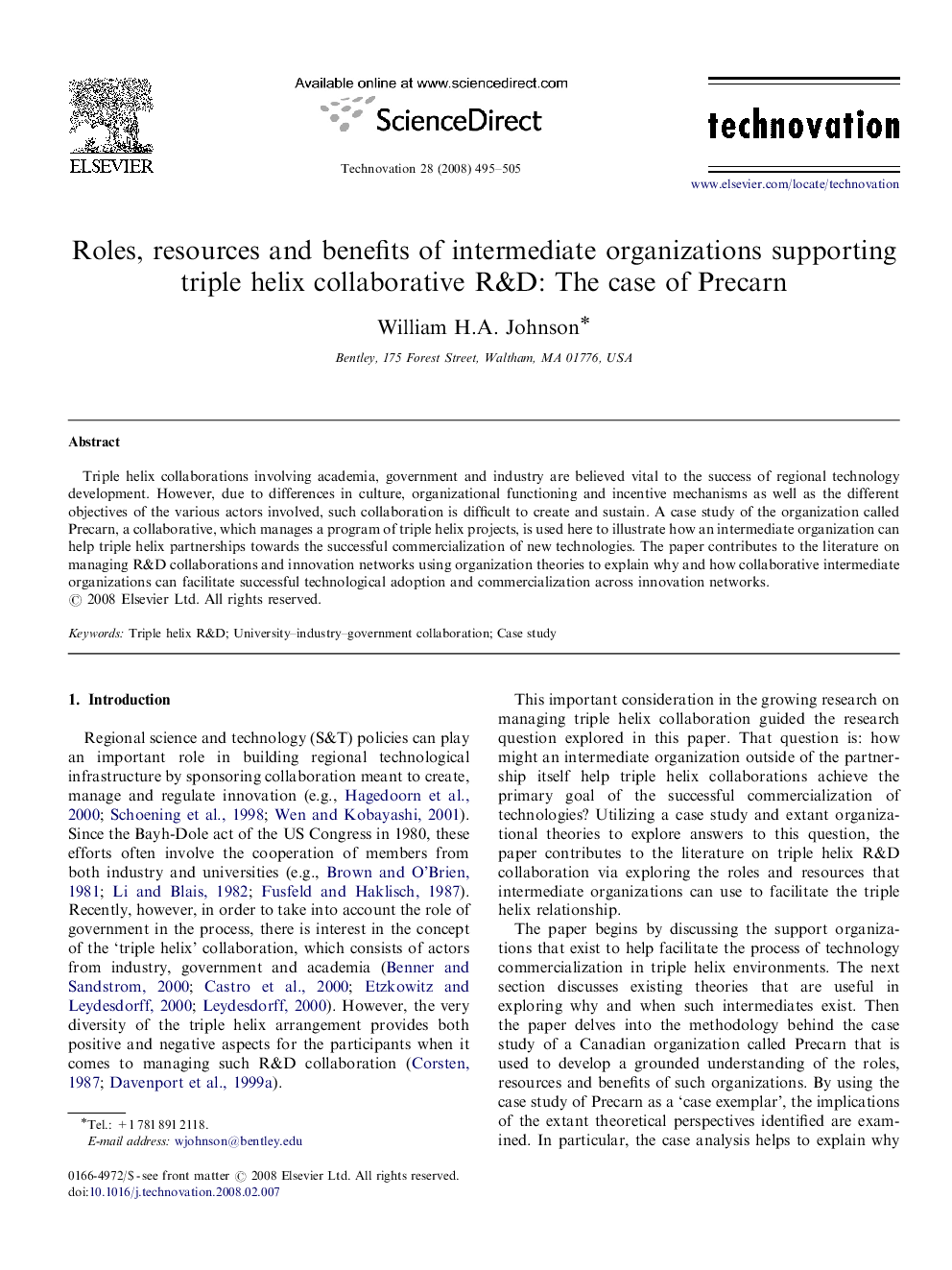| Article ID | Journal | Published Year | Pages | File Type |
|---|---|---|---|---|
| 1022734 | Technovation | 2008 | 11 Pages |
Triple helix collaborations involving academia, government and industry are believed vital to the success of regional technology development. However, due to differences in culture, organizational functioning and incentive mechanisms as well as the different objectives of the various actors involved, such collaboration is difficult to create and sustain. A case study of the organization called Precarn, a collaborative, which manages a program of triple helix projects, is used here to illustrate how an intermediate organization can help triple helix partnerships towards the successful commercialization of new technologies. The paper contributes to the literature on managing R&D collaborations and innovation networks using organization theories to explain why and how collaborative intermediate organizations can facilitate successful technological adoption and commercialization across innovation networks.
